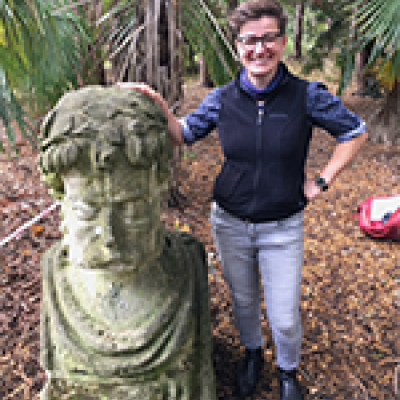The Historic Built Environment as a Long-Term Geochemical Archive: Telling the Time on the Urban "Pollution Clock"

An innovative study led by Dr Katrin Wilhelm, Researcher and Departmental Lecturer at the School of Geography and the Environment, uses Oxford’s historic structures as geochemical "clocks" to reveal past pollution trends.
Using laser ablation mass spectrometry the study examined the changing levels of lead (Pb) deposited by pollution events within their 350-year-old crusts. The results provided localised insights into historical urban pollution dynamics and human impact.
Lead author Dr Katrin Wilhelm said, "The study's insights into air pollution's effects can aid in long-term environmental impact assessment, inform mitigation strategies and offer a benchmark for evaluating the effectiveness of environmental policies, thus guiding future urban planning, pollution control, and risk management strategies."
The Pollution Clock work also featured on the first episode of Channel 4/More4's Cleaning Britain's Greatest Treasures (at 43 minutes, 30 seconds).
Wilhelm, K., Longman, J., Standish, C.D. and De Kock, T. (2023) The Historic Built Environment as a Long-Term Geochemical Archive: Telling the Time on the Urban "Pollution Clock". Environmental Science and Technology.
The Historic Built Environment as a Long-Term Geochemical Archive: Telling the Time on the Urban "Pollution Clock"
An innovative study led by Dr Katrin Wilhelm, Researcher and Departmental Lecturer at the School of Geography and the Environment, uses Oxford’s historic structures as geochemical "clocks" to reveal past pollution trends.





